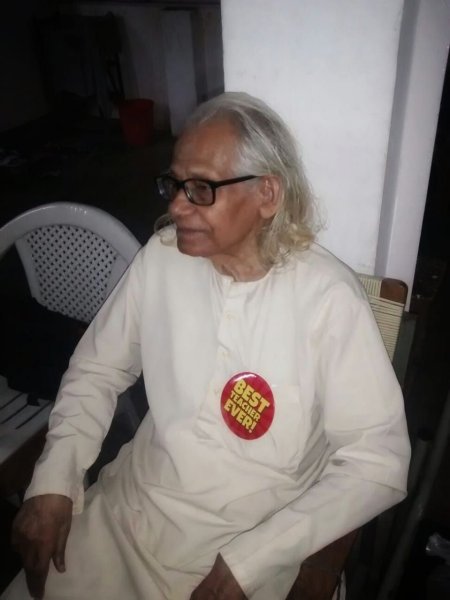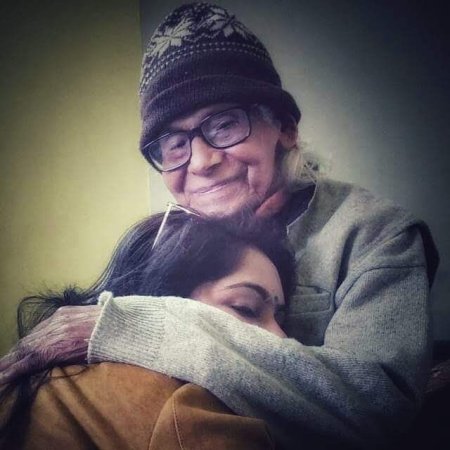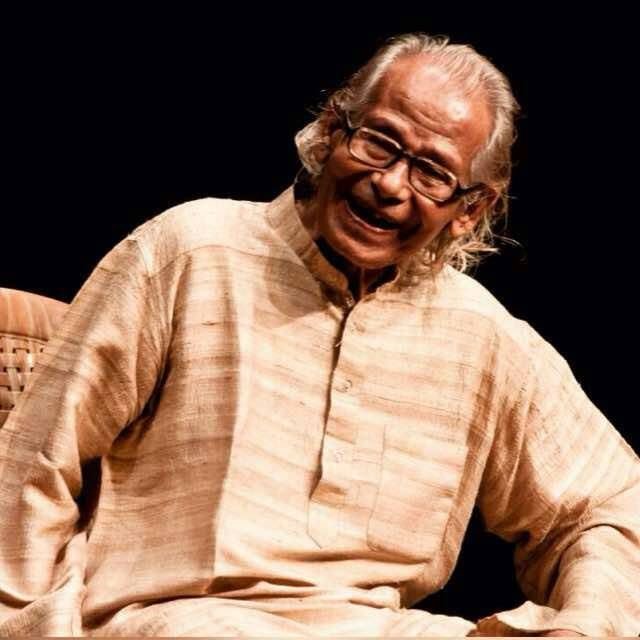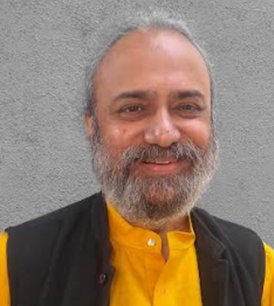 |
  |
 |
  |
Guru Valmiki Banerjee: A lifetime in dance - Ashish Mohan Khokar e-mail: khokar1960@gmail.com June 25, 2023 
Veteran dancer-choreographer nonagenarian guru Valmiki Banerjee passed away on June 25, 2023 at his home in Delhi at 11.20am. He was 97. He taught nearly every early dancer of Delhi in the 1950s-1970s. He was a pioneer who loved dance and went to Kerala to learn from Guru Gopinath and hailing from Bengal, he taught ballet and tried long and hard to establish Rabindra Natyam, as a classical form. He was possessed with this cause. He tried very hard to get it recognition and acceptance as a 9th classical form but none of the agencies or institutions helped his cause. After 90+ years of work and contribution, sadly he did not get a national award. He leaves behind his daughters Nupur and Jhumur, and sons Partho and Tanmoy and many students in three generations. His principal disciple and right hand, Nancy Sahu served him like a daughter in his end years.  Valmiki Banerjee & Nancy Sahu Born in 1926, Valmiki Banerjee spent his early childhood in his village, Amgaon, Faridpur district, in undivided Bengal. His formative years were spent in a 'musical atmosphere' as his family members were culturally inclined. His grandfather Dhirendralal Banerjee was interested in music. It was unthinkable for a man from a 'good family background' to learn dance and Valmiki's potential in this art form would have probably remained unnoticed. But young Valmiki was fortunate enough to find a mentor in his maternal uncle Nirpati Mukherjee, who detected Valmiki's talent in his fluid movements. Fortunately for Valmiki, his uncle had enough knowledge about dance to initiate him into that world and guide him to channelize his potential in the right direction. After completing his schooling from Barishal, Valmiki went to Calcutta for further studies. This turned out to be a decisive phase in his life. Calcutta opened a new vista for him. At that time, 1945-56, Calcutta was thriving on all kinds of cultural activities including music and dance. Valmiki joined 'The Oriental School of Music' where he began learning from Joydev Chatterjee. He also learned from various other teachers, including Prabhat Mishra, Tarachand, and Kathak from Guru Sohanlal. Valmiki appeared in his first public performance in Jessore, Bangladesh, on their Independence Day. At this stage, he started helping his Guru in various choreographic ventures. He also danced for films like Meghdoot and Sri Tulsidas. He was the Assistant Director (Dance) in the film Pandit Moshai. However, he never really liked working in films, preferring the stage. Valmiki was not destined for a static life. People had started discovering the beauty of form and spirit in the Indian classical dances. Madras, with the opening of an institution like Kalakshetra, started becoming the dance capital of India. Valmiki too, like many of his contemporaries, could not resist the temptation to go to Madras and learn from gurus there. In Madras, he learned for some time in Kalakshetra. However, he was quite impressed by Kathakali for its balletic form, learning it under Guru Gopinath. The Kathakali style is closer to reality and that is important for establishing characters. He found Guru Gopinath's style extremely appealing. Valmiki used to learn from him as well as teach many students, the Manipuri and Kathak style which earned him enough to sustain himself. He gave a number of public performances as well. He was always attracted by contemporary themes which would not merely portray the beauty of the dance form but which would also reflect the spirit of the time which is relevant to society's present state of existence. At that time, the country was being torn apart by the post-partition communal riots. While in Madras, Valmiki presented a short ballet with Hindu-Muslim fraternity as the theme.  Initially, Valmiki had plans to settle in Madras. But fate had different designs for him. His restless spirit always compelled him to move forward. After three years in Madras, he decided to head for Delhi. En route, he spent a few months at the Gandhi Ashram in Wardha. On reaching Delhi, he had many dreams, an ambition to do something really great and just Rs. 4 in his pocket. He did not have a place to stay, so he stayed in the ashram at Nigambodh Ghat. Despite many struggles, his zest for life did not allow him to lose hope. With Purnendu Chatterjee, he opened a branch of IPTI in Delhi. Before forming his own troupe, he performed often under its banner. Gradually his name started becoming known among the art lovers in Delhi and he began getting an increasing number of students. He choreographed Rabindranath Tagore's Chitrangada, his first ballet in Delhi, entirely with his own students. Among his early students, many are celebrated dancers today, Madhavi Mudgal and Aloka Panikkar to name two. In Delhi, he started teaching in schools like Vidya Bhavan. He also joined Gandharva Mahavidyalaya as a director-teacher. When Valmiki started teaching in Delhi, ballets were not much in vogue. With infrastructural support from Gandharva Mahavidyalaya, he produced and directed a number of ballets. He was the first dance director in Delhi to bring together boys and girls in a stage performance. Even Gandharva Mahavidyalaya was not enthusiastic, thinking it might antagonize the parents of the students. However, no adversity was strong enough to deter this man once he had made up his mind. By then, he had started giving many private tuitions. With his students, he produced a ballet called Sri Durga, the first in Delhi to have a male and female cast. It was a grand success and after that, there was no looking back for him. He directed several ballets like Janardan and Mirabai. He formed his own group comprising of his students. The group was named 'The Delhi Ballet Troupe.' It did its first production Mirabai at AIFACS Auditorium. The production cost was Rs. 900. Imagine how much it would cost now! He directed Sonar Bangla based on the plight of Muktijoddhas - the freedom fighters and ordinary citizens of Bangladesh - during their struggle for independence. He considered it to be his finest production. Another of his unique productions is Bal Pratibha in which he portrays the child of today as the citizen of tomorrow. In each child, there is a potential artiste, leader, scientist; one has to recognise this and channelize their energies in the right direction, being the theme of this unique ballet which had as the Chief Guest of the program, main speaker and of course the artists themselves, all children.  Valmiki wanted to create a platform where artistes from all over the world could come, meet each other and exchange ideas, not only through performances but through seminars and workshops as well. "This will lead to true cultural exchange and create an environment of international integration." However, this needs considerable funds. His only regret was that he never received any support or help from government, either in terms of finance or recognition. On the brighter side, he earned a great amount of respect, not only from the dance community but also from critics and general public. A silent worker, he quietly continued his work in dance and for the welfare of the community. For example, he taught many children from slum areas and even used them in his shows. All these, he did without any monetary returns, taking pains to visit these children's parents and persuading them to send their children to him. He directed all his energies towards fulfilling his greatest ambition in life - to create harmony through art, to spread the message of peace, fraternity and brotherhood through the medium of dance and thus create a truly humane society. In Valmiki Banerjee, we had one of the last genuine souls of dance left.  Khokar is a critic and author by profession; historian by education; arts administrator by occupation; archivist by disposition; film compiler through documentation and celebrator of arts and artistes by tradition. More details on attendance-india.com Post your comments Please provide your name and email id along with your comment. All appropriate comments posted with name and email id in the blog will also be featured in the site. |